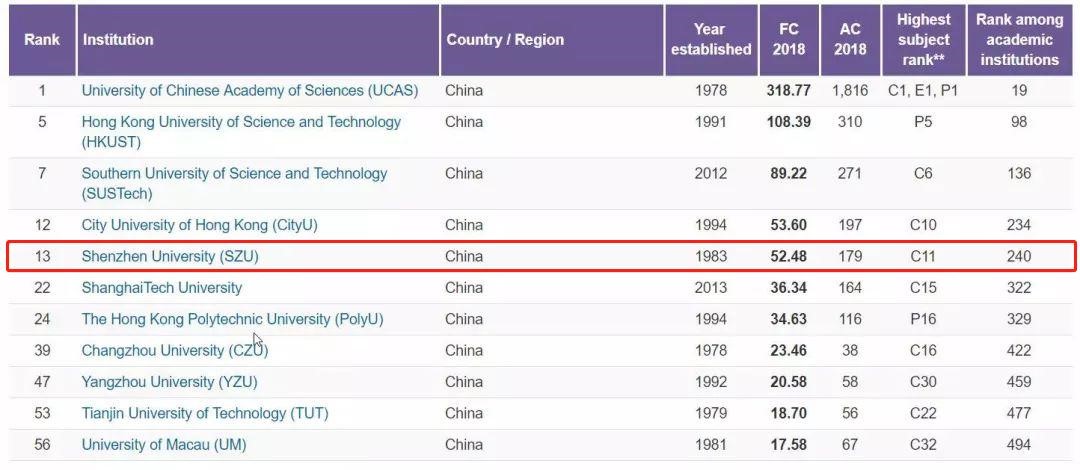On 24 October, Nature published the “Nature Index 2019 Young Universities”. This index highlights the world’s leading young universities (aged 50 and under) in the natural sciences. Shenzhen University is ranked 13th among the Nature Index Young universities and is the third-fastest rising young university in the world.

A feature article published by Nature on 24 October reports on the nine young universities that are “in the fast lane” in the world. All nine universities have a history of less than 50 years. All strive to innovate and to deliver outstanding performance in a wide range of research fields. SZU is one of them.
“Following Shenzhen University’s establishment in 1983, two of China’s top universities, Peking and Tsinghua, seconded teaching staff to the fledgling institution,” says the article. “The move was to support the city of Shenzhen’s development as one of four ‘special economic zones’ in southeastern coastal China, which were created in 1980 to attract foreign investment and technology.”
According to the article, SZU has many high-profile alumni, which include “computer scientist, Ma Huateng, who is the founder and chief executive of the Chinese social media behemoth, Tencent, and software engineer, Shi Yuzhu, who set up the online gaming company, Giant Interactive Group.” “Alumna Tu Hongyan, now chairperson of Hangzhou-based silk brand, Wensli, was named one of Forbes’ top Chinese women in business in 2018.”
The article especially mentions one of SZU’s most highly cited scientists, Zhang Han, a professor of optics and photonics. “Han uses graphene and other two-dimensional materials to create laser photonics devices, which have applications in fields such as medicine, communications and quantum information science.”
“Our research received heavy investment from the Shenzhen municipal government, which considers new materials as one of its priority high-tech industries,” Han told Nature.
“SZU’s advantages over more established universities in China include the encouragement it offers to young scientists who are keen to pursue new research areas, and its strong support for international collaboration,” says the article. “The university has partnerships with 256 universities overseas for collaborative research and student training. It also has strong links to local industry due to Shenzhen’s status as a high-tech hub. Last year the university’s total research budget exceeded 1.1 billion yuan (US$153 million), up from 100 million yuan in 2013, and it received 302 grants from the National Natural Science Foundation of China.”
In addition to Shenzhen University, the article also mentions the other eight universities around the world that are ‘in the fast lane’, including the Swiss Federal Institute of Technology Lausanne, ShanghaiTech University, Ulsan National Institute of Science and Technology, Daegu Gyeongbuk Institute of Science and Technology, Oregon Health and Science University, Queensland University of Technology, University of Paris-Sud, and Hong Kong University of Science and Technology.
(Link to the article:https://www.nature.com/articles/d41586-019-03176-1)

